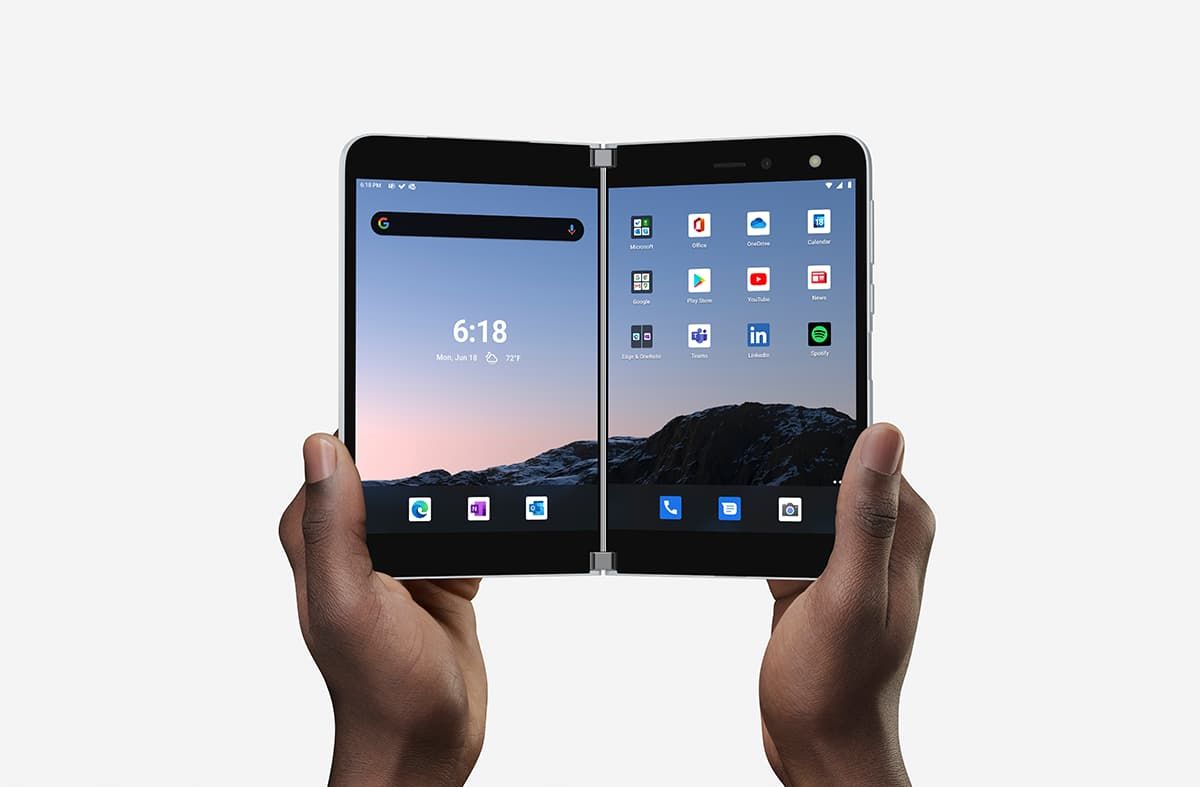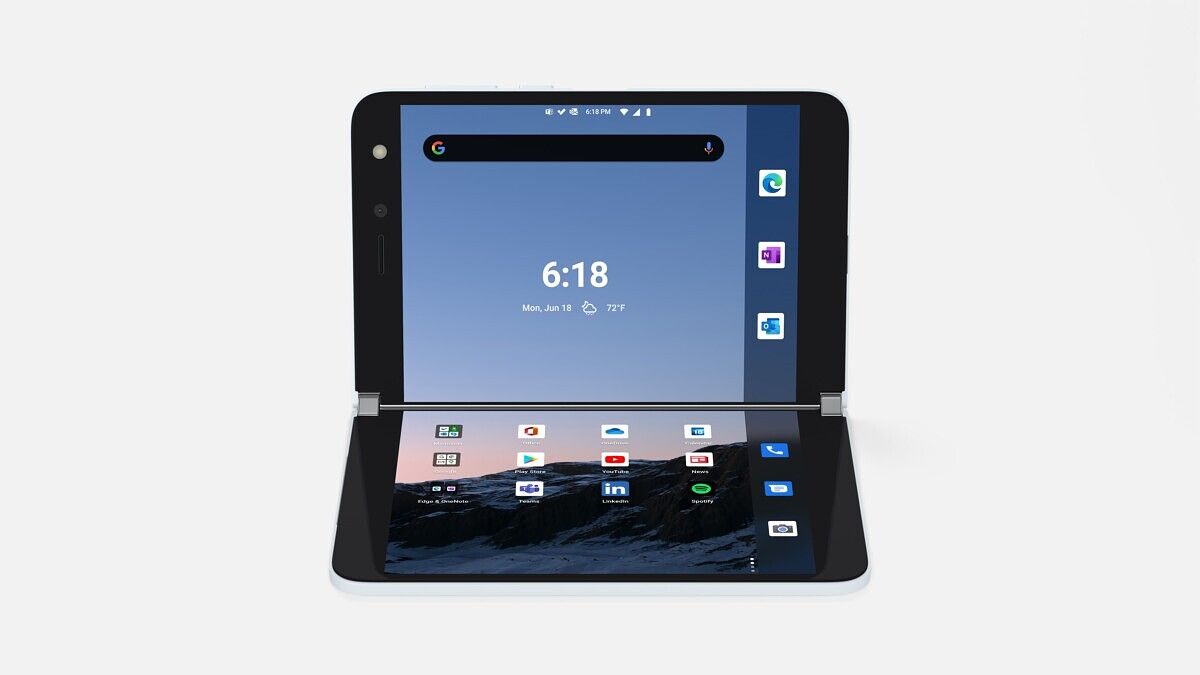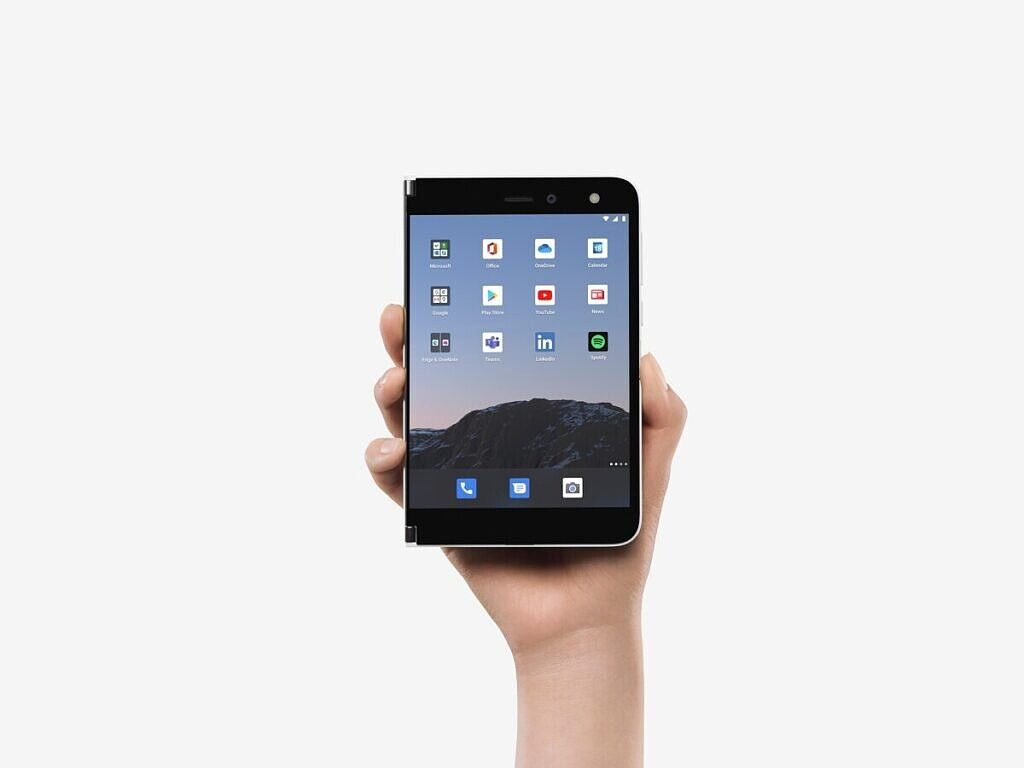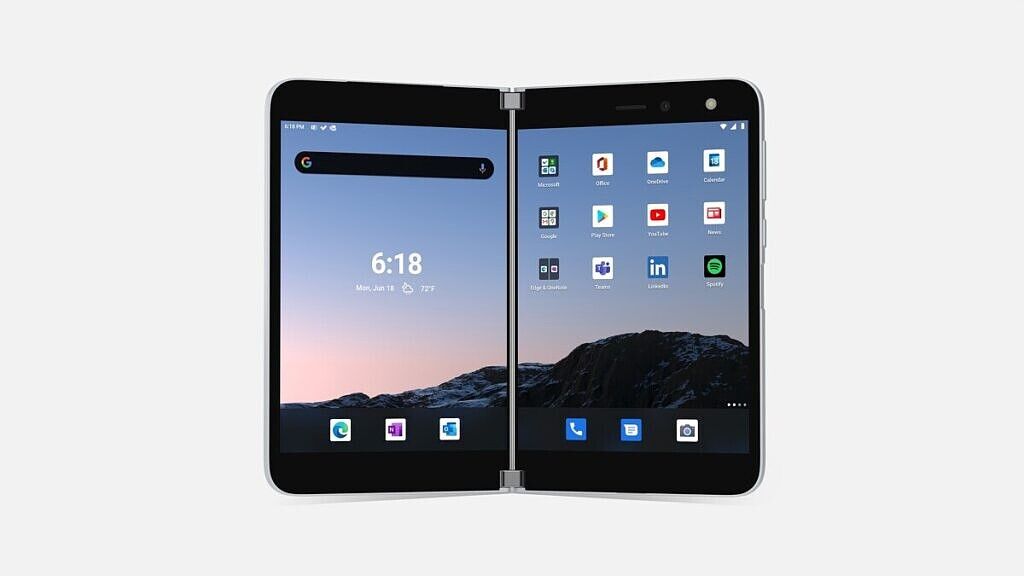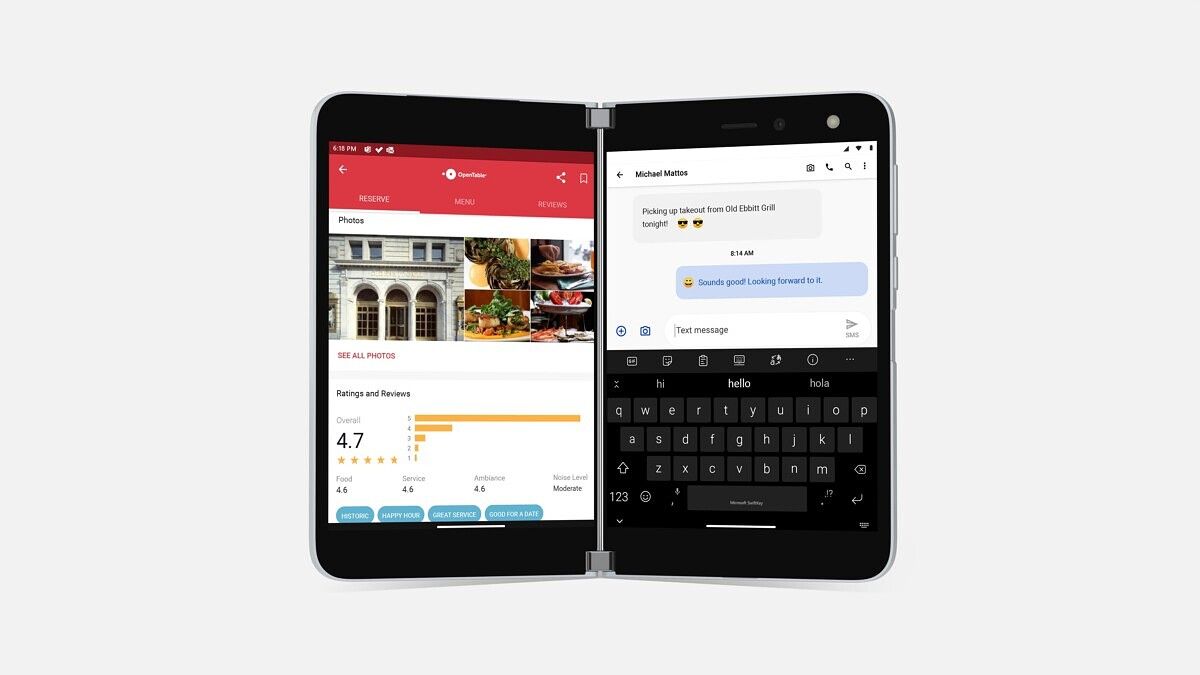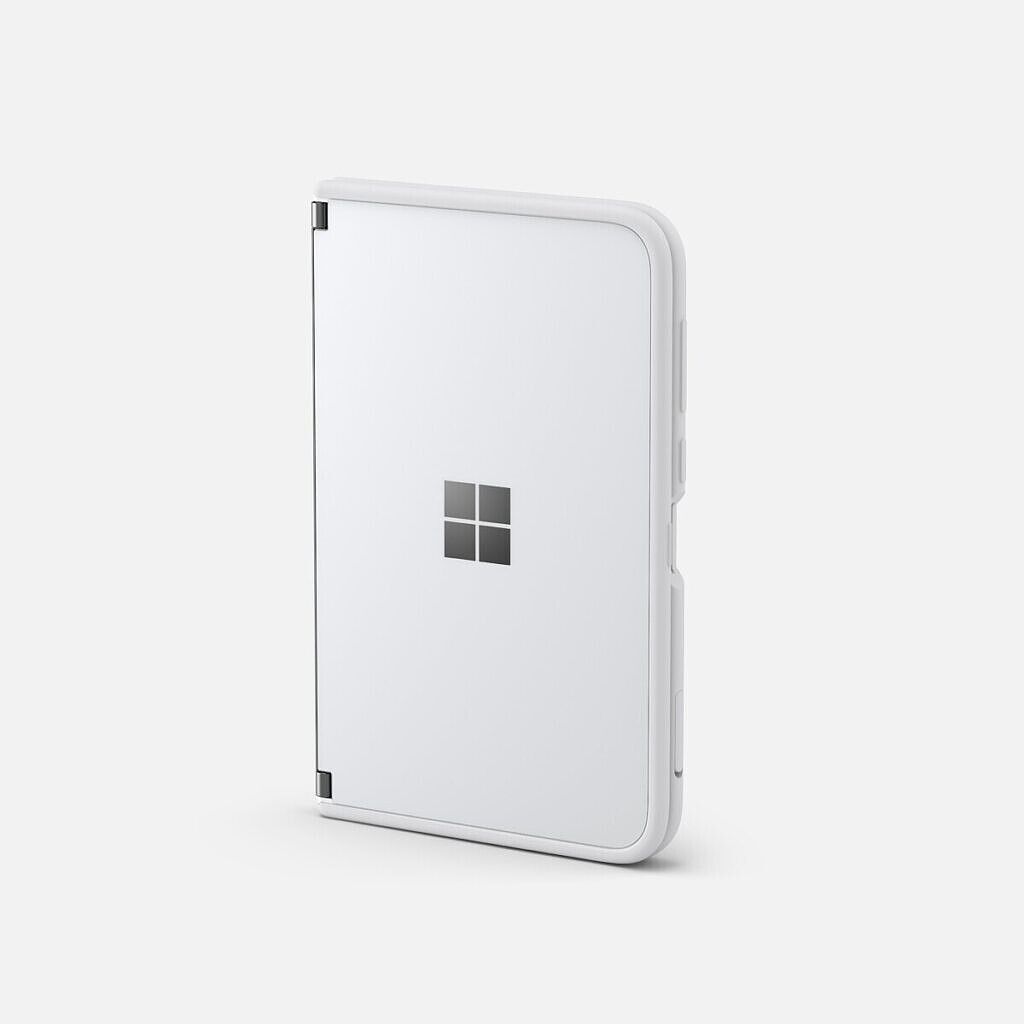Last October, Microsoft announced the Surface Neo and Surface Duo. These were both meant to be the future of the Surface line. The Surface Neo is a dual-screen laptop running Windows 10X, while the Surface Duo was a dual-screen Android phone. Microsoft had originally teased both of these devices for Holiday 2020 but they sped up the timeline for the Surface Duo and officially announced it today, with sales commencing from September 2020. In this article, we'll take a look at specs, features, details, pricing, and availability!
Microsoft Surface Duo XDA Forums
Microsoft Surface Duo: Specifications
|
Specifications |
Surface Duo |
|---|---|
|
Dimensions & Weight |
|
|
Display |
|
|
SoC |
|
|
RAM & Storage |
|
|
Battery & Charging |
|
|
Camera |
|
|
Connectivity |
|
|
Security & Authentication |
|
|
Pen & Inking |
Supports all in-market generations of Surface Slim Pen, Surface Pen and Surface Hub 2 Pen |
|
Audio |
|
|
Exterior |
|
|
Android Verison |
Android 10 with Microsoft Surface Duo UI |
|
Price |
$1,399 |
These specs might not seem all too impressive, but this is meant to be a productivity device first and foremost. Productivity devices generally don't need the latest and best specs, but instead a meaningful combination of specifications that can make the device function in the best manner possible. Microsoft made it very clear that they cared about thickness and weight more than almost anything about this device, and it shows. The device will likely perform well for its lifespan.
Design and Display
The display's on the Surface Duo are very special. There are two identical 1080p PixelSense AMOLED displays. They both come with a 4:3 aspect ratio and 1800x1350 pixel resolution each. They both cover 100% of the sRGB and DCI-P3 color gamut.
The display panels aren't all too impressive, but the technology Microsoft put into them is. Both displays use Microsoft's proprietary dual-screen calibration. This is to make sure both displays are 100% identical. The two displays should be indistinguishable from each other. The displays support Microsoft Active Pens, so you can use any of the recent Surface Pens on them.
The phone is incredibly thin at just 4.8mm while unfolded, which as you see above, is just a tad bit thicker than the USB Type-C port. This is by far one of the thinnest devices to launch in recent memory. While folded it is still a slim 9.9mm, actually coming in very close to the Galaxy S20 Ultra. While unfolded, you can use either the two displays as two separate displays running two separate apps, or two parts of one app, or rotate the display and use it as an 8.1" tablet.
Just like the Surface Book 3, the Surface Duo is a very adaptive device. On the Surface Duo, you can fold the display 360 degrees. It's a full display hinge. It also uses watch mechanics to lock into place, so you can fold it half-way like a laptop or into a tent shape for watching something like Netflix or YouTube.
Software Experience
Microsoft made this device a dual-screen because they said there was something natural about windows and the flow of having two screens. Microsoft says on a single screen device you are always having to lose focus by closing apps and switching, it breaks focus and flow. The idea was that having two screens that intelligently work together is much better than a single screen. The Surface Duo's two screens let you drag and drop images, files, and text along with apps to get work done faster. Microsoft has adapted its Office suite of apps and OneDrive to span across the displays, and some third-party apps like Amazon Kindle can mimic a book-like reading interface to take advantage of the dual-screen design. Outside of these, any Android app should work on each of the displays, even if they aren't necessarily taking advantage of the design. Microsoft has also created APIs for dual-screen apps to work in the Android codebase, and it plans to upstream them for other manufacturers and third parties to use.
This is the intangible aspect of it. It's not much larger than your average glass slab phone yet it offers much more versatility and theoretical productivity. It lets you work without stopping. There's no need to stop to switch apps or close an app to copy and paste or even switch apps to open a link. It just lets you open it on the second screen. LG tried to make a dual-screen device, but even after multiple attempts, there's still scope for improvement in key areas. The software just wasn't there, the dual-screen case felt bulky, and the dual-screen felt like an afterthought. The Surface Duo fixes all of these issues.
This phone is not for everyone, though. As Microsoft told us, this is a phone for Surface and Office fans. It doesn't have a fancy high refresh rate display or quad-camera setup or insane fast charging. It was just designed to take the Surface aesthetic Microsoft has been working on for years and bring it to mobile. It is truly a Microsoft phone, and that by no means is a bad thing. It just means the phone is not going to be for everyone, and that's fine. Microsoft knows who this phone is for and who it is going to sell to. It's not the Android enthusiasts or early adopters, but the Surface fans.
Microsoft Surface Duo: Pricing and Availability
The Surface Duo will be available for pre-order starting today in the US. The phone will cost $1,399 for the base 128GB/6GB model. It will also be available in a 256GB/6GB model. You can pre-order it from the Microsoft Store, Best Buy, or AT&T. The phone will be available in-store and online from September 10, 2020, onwards. It only comes in one color, Glacier. It will come in an Unlocked version and also a locked AT&T model. The unlocked model has eSIM while the AT&T model does not.
Microsoft has decided not to provide any pre-order bonuses with the device, but you do get a bumper cover in the box.
What are your thoughts on the Microsoft Surface Duo? Let us know in the comments below!

